Can Peyton Manning match John Elway and go out a champion?

And now there appear to be two.
Peyton Manning, with his victory in Super Bowl 50 Sunday night, in what almost certainly will be his final game, joins John Elway as the only Pro Football Hall of Fame quarterbacks of the Super Bowl era to win a championship in their final game.
Including recent Hall inductees Brett Favre and Ken Stabler, the other 20 Hall of Fame quarterbacks since the start of the Super Bowl era in 1966 either lost their final game or left with an injury. That’s quite a track record.
For some, the combination of age and health became too big a barrier to overcome. For most, the victory parades and the rallies became long-ago memories as time proved the wisdom of the warning that accompanied conquering generals when they marched through ancient Rome in triumph: “All glory is fleeting.”
Manning, 39, should he retire this year, will become eligible for Hall induction in 2021. He was not spectacular Sunday, completing 12 of 23 for 141 yards and an interception. His last career pass may have been a successful two-point conversion toss to Bennie Fowler.
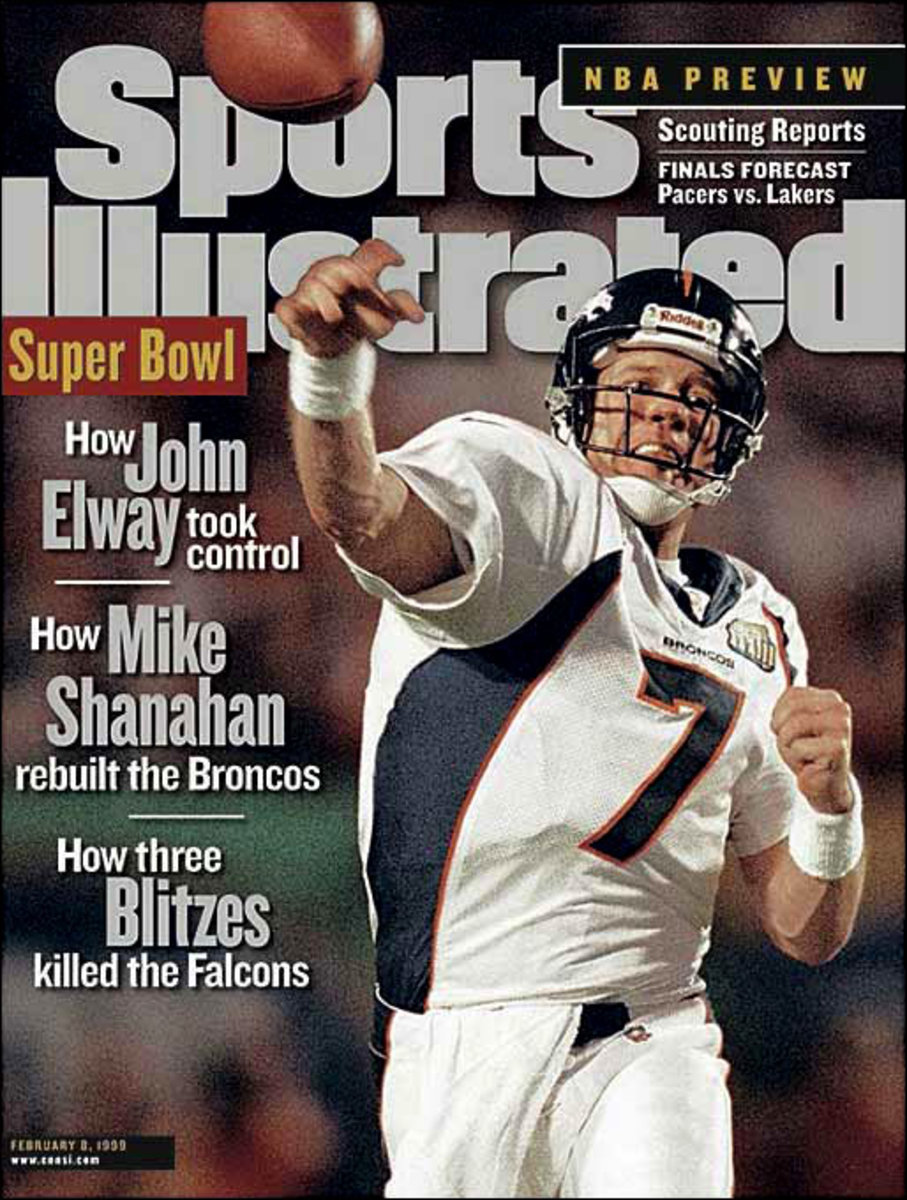
The 38-year-old Elway, currently Manning’s boss and mentor in Denver, truly rode out in triumph. After finishing the 1998 regular season with career bests in quarterback rating and yards per attempt, he led the Broncos to a second straight NFL title in Super Bowl XXXIII, against the Atlanta Falcons. Elway completed 18 of 29 passes for 336 yards, including an 80-yard touchdown heave to Rod Smith, and added a four-yard touchdown run. He officially retired the following spring.
In the pre-Super Bowl era, Hall of Famers Otto Graham of the Cleveland Browns in 1955 and Norm Van Brocklin with the Philadelphia Eagles in 1960 also ended their careers with NFL titles. Those are the exceptions.
What about Elway’s fellow cohorts from the famous quarterback draft Class of 1983, Dan Marino and Jim Kelly?
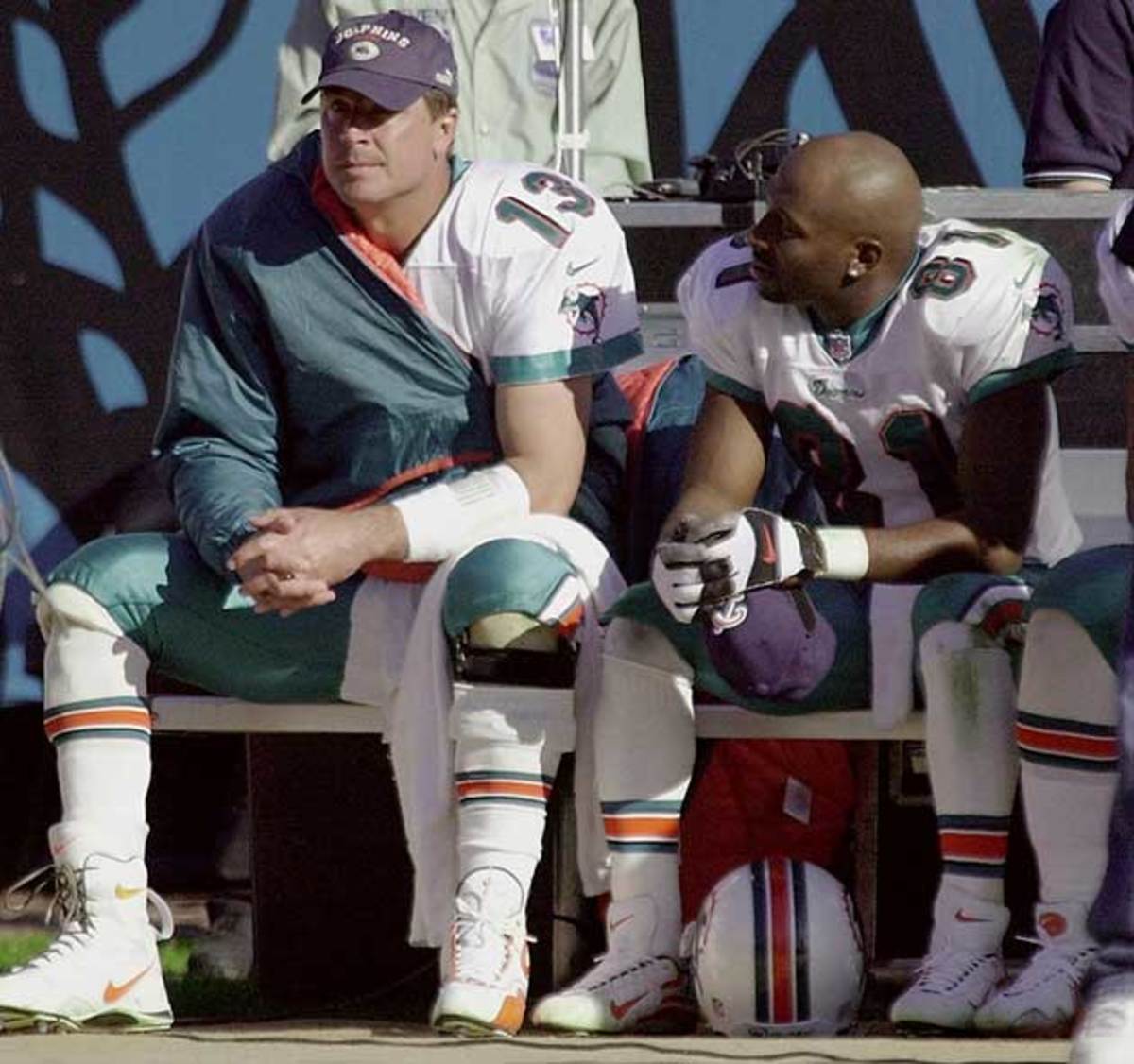
In 17 seasons with the Miami Dolphins, Marino threw for more than 61,000 yards and tossed 420 TD passes. In 1984 he broke the 5,000-yard barrier. Yet in terms of the scoreboard, no career ended worse than Marino’s when the Jacksonville Jaguars clobbered Miami 62-7 in the 1999 divisional playoffs. Marino, 38, the NFL’s five-time leader in passing yards, threw for only 95 yards on 11 completions in that game, with a touchdown and two interceptions. He ended his career on the bench as backup Damon Huard, currently a college football analyst with ESPN, took over in the second half.
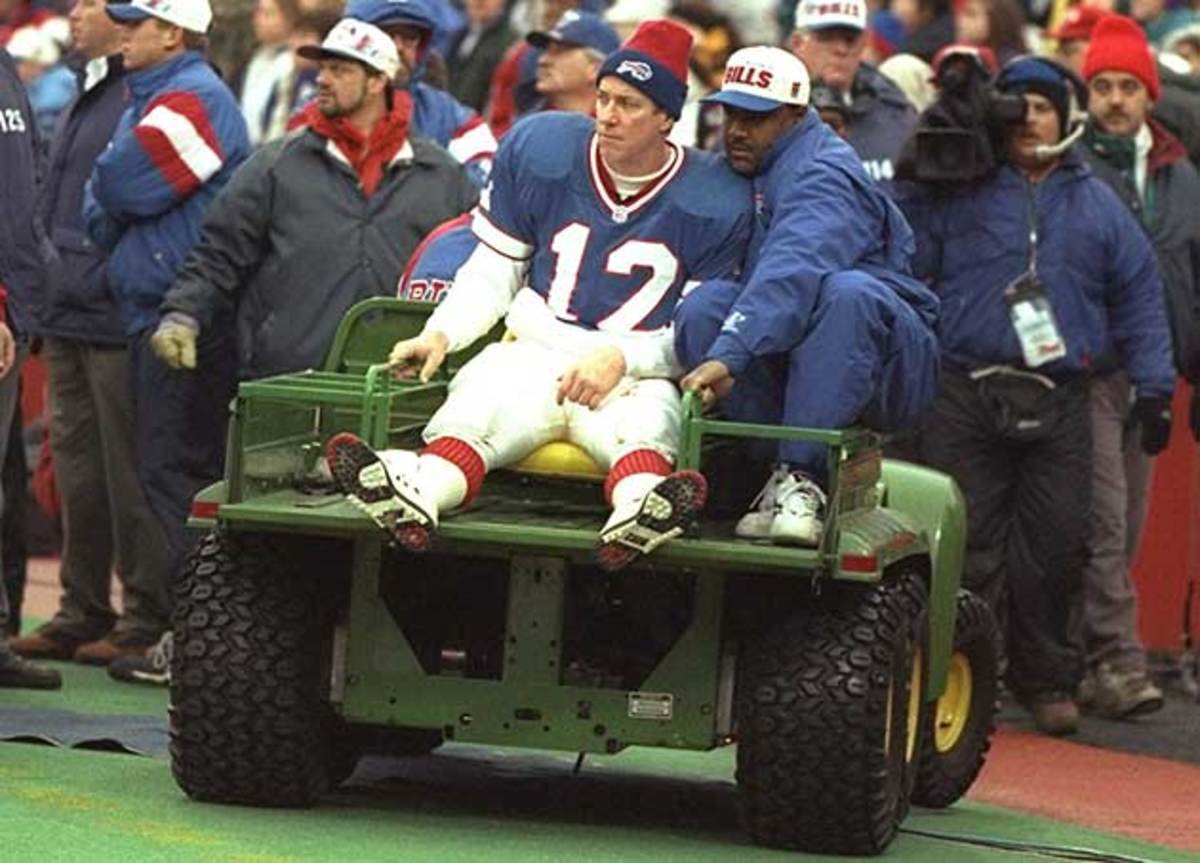
Kelly, often described as a linebacker playing quarterback, guided the Buffalo Bills to four Super Bowls and led the NFL in quarterback rating and completion percentage in 1990. But the Jaguars also ended Kelly’s career, beating the Bills in Buffalo 30-27 in the ’96 divisional playoffs. The 36-year-old Kelly completed 21 of 32 passes for 239 yards, a touchdown and an interception. However, it was his fumble following a hard hit from safety Chris Hudson that led to Jacksonville’s winning field goal. The tackle also knocked Kelly out of the game with a concussion. He never played again.
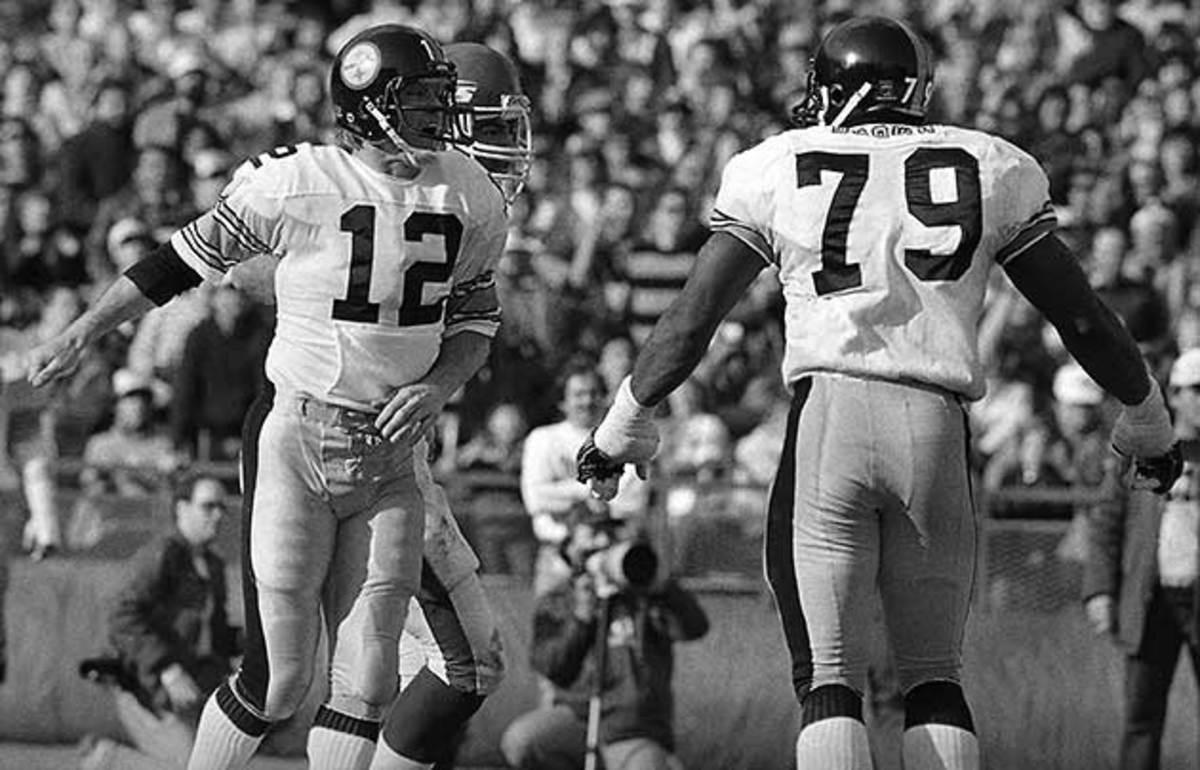
Terry Bradshaw, winner of four Super Bowls with the Pittsburgh Steelers, went the Ted Williams route. Instead of hitting a home run in his final at-bat, Bradshaw threw a TD pass on his last attempt, a 10-yard strike to Calvin Sweeney in the Steelers’ 34-7 win over the New York Jets in the last NFL game at Shea Stadium. But Bradshaw, 35, who had missed the first 14 games of the 1983 season with a bum elbow, reinjured his elbow on the pass to Sweeney. His career was over.
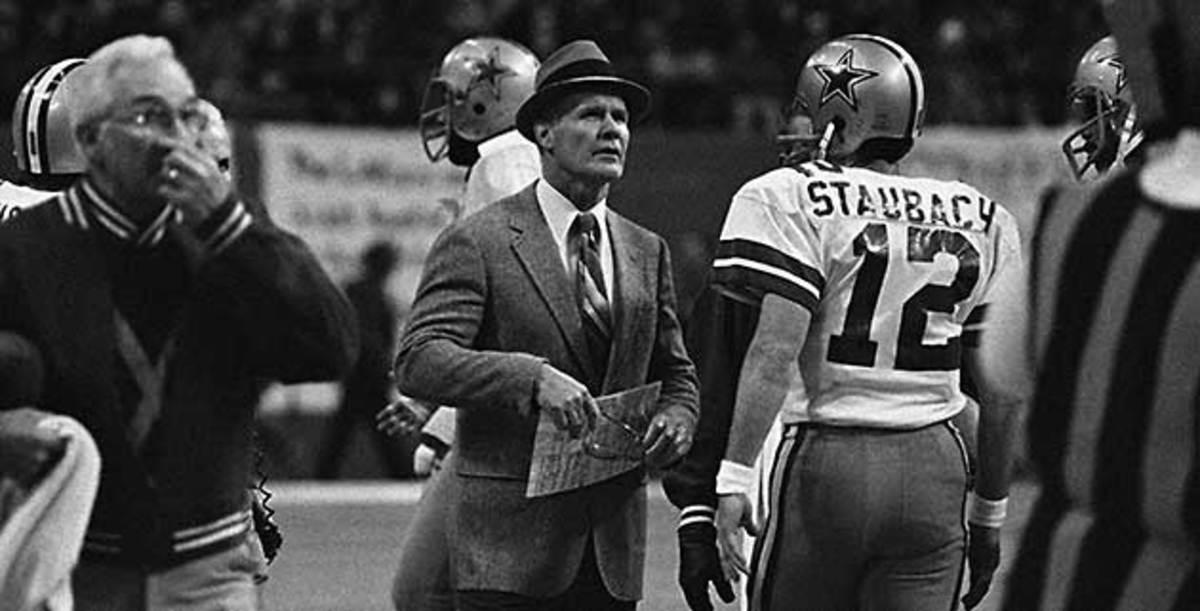
There was no third Super Bowl title for 37-year-old Roger Staubach during his final campaign in 1979, although he had rallied the Dallas Cowboys to the playoffs with a thrilling 35-34 regular-season finale victory over Washington. The following Sunday, the Los Angeles Rams upset Dallas 21-19 in the first round of the playoffs. Staubach, who had led the NFL in passing the previous two seasons, was 12-for-28 for only 124 yards with a TD pass and an interception. The final throw of his career bounced off Cowboys offensive guard Herbert Scott. Although Staubach still possessed top-shelf skills, a series of concussions helped persuade him to call it a career.
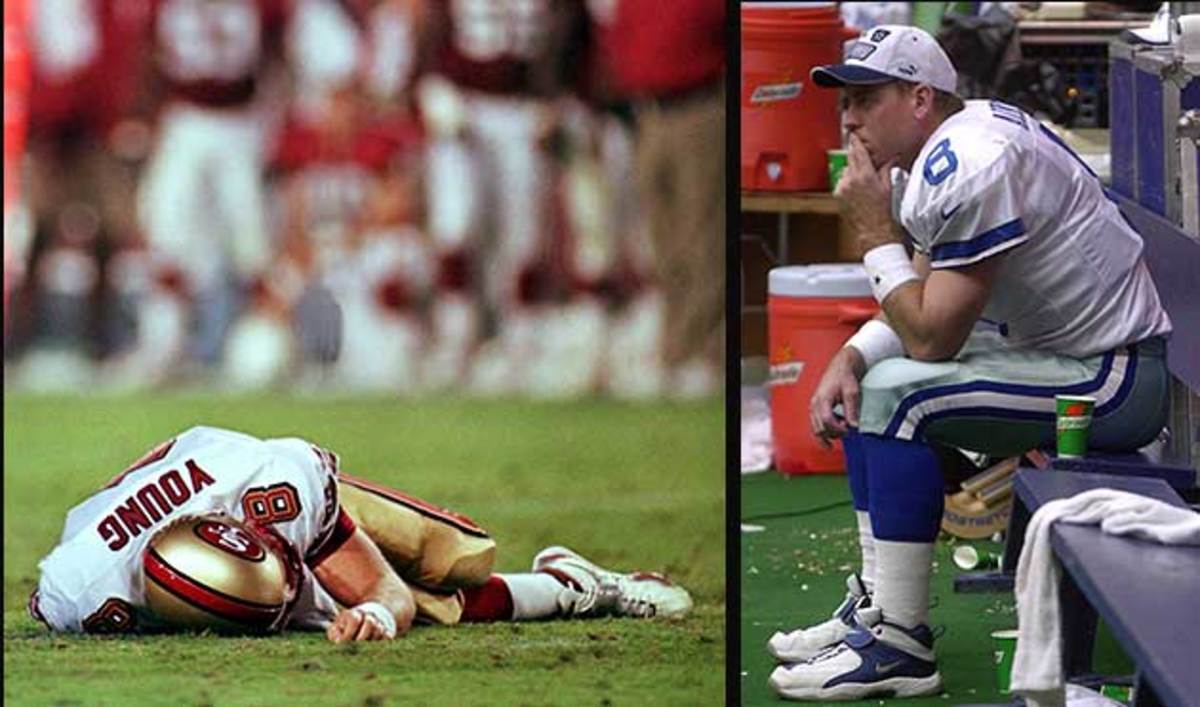
More recently, Troy Aikman, another Hall of Fame multi-Super Bowl champion for Dallas who compiled a superb playoff record of 11-4, also stepped aside after too many blows to the head. Most notably, Aikman played Super Bowl XXVIII only one week after suffering a serious concussion in the 1993 NFC championship game. But after being roughed up by Washington’s LaVarr Arrington in the third to last game of the 2000 season, Aikman, only 34, was through, ready to pick up the microphone on Fox’s NFL telecasts. His final line was 2-for-3 for 16 yards.
Injuries also took out Steve Young, one of Aikman’s top rivals during the 1990s. The MVP of Super Bowl XXIX, and the only man to lead the NFL in passing six times, Young left the field three games into the 1999 season. He had completed 13 of 23 passes for 92 yards, a touchdown and an interception against the Arizona Cardinals before a violent sack by defensive back Aeneas Williams. Young, nearly 38, had suffered at least the seventh concussion of his career. He retired the following off-season and now serves as analyst for ESPN.
Then there’s Bart Starr, whose 9-1 playoff record and five NFL championships remain the postseason standard for quarterbacks. But by 1971, Starr, 37, had undergone two arm operations and he played only four games. His final outing was a 27-6 defeat to the Miami Dolphins, a team on the verge of its own championship run. Starr completed 13 of 22 passes for 126 yards in the Orange Bowl, the site of Green Bay’s Super Bowl II victory four years earlier and the Packers’ last playoff win until 1982.
John Unitas and Joe Namath, two quarterbacks associated with the New York Jets’ epic upset of the Baltimore Colts in Super Bowl III, ended their careers on the West Coast a continent away from their personal and professional roots and the glory they had achieved in the Northeast.
After 17 seasons, three MVP awards and three NFL championships in Baltimore, Unitas, who is often credited with modernizing the position of quarterback and whose record 47 consecutive games throwing a touchdown pass stood for more than a half-century, retired as a San Diego Charger. Unitas, 40, played only five games in the 1973 season. His final appearance, on Nov. 4, consisted of one pass, a seven-yard completion, in a 19-0 defeat to Kansas City.
Namath, the guarantor of the Jets’ Super Bowl victory in January 1969 and the first quarterback to throw for more than 4,000 yards in a season, in 1967, never won another postseason game. He finished his career a Log Angeles Ram in 1977 where his final appearance was less Broadway Joe and more Sunset Joe. On a windy Monday night in Chicago, Namath, only 34 but with battered knees of a much older man, completed 16 of 40 passes for 203 yards and was intercepted four times. After the fourth interception, Namath was replaced by Pat Haden and never took another snap.
Haden also ended the career of another Hall of Famer, the Minnesota Vikings’ Fran Tarkenton, who would retire as the NFL’s all-time leader in TD passes with 342. The Haden-led Rams defeated the Vikings 34-10 in the 1978 divisional playoff round as Tarkenton, 38, who had thrown a career-high 32 interceptions during the regular season, completed 18 of 37 passes for 219 yards, one touchdown and two interceptions. His leading receiver, with seven receptions, was future broadcaster Ahmad Rashad.
One Hall of Famer didn’t even throw the ball at the end. Former quarterback George Blanda finished his career as a 48-year-old placekicker for the Oakland Raiders. In his final game, he booted a field goal and extra point in the Raiders’ 16-10 defeat to the Steelers in the 1975 AFC title game.
A few Hall of Fame quarterbacks never reached the Super Bowl, although Sonny Jurgensen picked up a championship ring as Van Brocklin’s backup with the 1960 Eagles. Vince Lombardi, Jurgensen’s coach on the ’69 Washington Redskins, said no one could throw the ball like Sonny, who led the NFL in passing yards five times. But by 1974, Jurgensen was a 40-year-old part-time starter. Called on to rally Washington in a divisional playoff against the Rams, Jurgensen completed only six of 12 passes and was intercepted three times, including a 59-yard pick-six by Rams linebacker Isiah Robinson, a cloudy finish to a sunlit career.
Dan Fouts took the San Diego Chargers to two AFC title games, led the NFL in passing yardage four times and three times in yards per attempts. But Fouts’ final season was the forgettable 1987 NFL strike year, and his last game was equally unfulfilling. The future Hall of Famer and broadcaster completed 22 of 37 passes for 257 yards with no touchdowns and three interceptions. He also was sacked five times in the Chargers’ 20-7 loss to the Indianapolis Colts. In San Diego’s finale a week later, Fouts, 36, sat out with a shoulder injury.
Few Hall of Famers bowed out more quietly than Warren Moon, the nine-time Pro Bowl passer who twice led the NFL in yards passing. Moon, who played successfully in Canada before joining the Houston Oilers in 1984, spent his final two seasons (1998-99) in Kansas City, playing only three games. His finale came Nov. 26, 1999, a 17-16 defeat to the Chargers in one of the few games won by Ryan Leaf. Moon, 44, was 12-for-31 for 130 yards and one interception.
A pair of championship-winning quarterbacks from Purdue also ended their careers in relative anonymity. The Chiefs’ Len Dawson led the old American Football League in passing five times and guided Kansas City to victory in Super Bowl IV. However, by 1975 he was a 40-year-old backup. He started only five games in ‘75, the final time in the Chiefs’ home finale, a 28-20 defeat to the Chargers and a young Dan Fouts. Dawson played capably, completing 14 of 20 passes for 154 yards, including a 17-yard TD toss to Barry Pearson, but an injured thumb helped convince him his playing days were over.
Bob Griese, who starred at Purdue a decade after Dawson, led the Dolphins to three straight Super Bowls, beginning in 1971. He continued to play at a high level through the 1970s, leading the NFL in passing in 1977 and helping Miami reach the playoffs in 1978 and ’79. But during the fifth game of the ’80 season, after Griese had completed 21 0f 37 passes for 272 yards and two TDs against the Baltimore Colts, a hard tackle by Mike Ozdowski tore up his shoulder. The future Hall of Famer decided to call it a career at 35 and move to the broadcast booth.
Joe Montana, as befits a four-time Super Bowl champion, seems to have his own category. No, Montana, 38, did not go out a winner in 1994 but he played superbly, guiding Kansas City to its second straight playoff berth as he threw for more than 3,000 yards and 16 TDs. He led the league in lowest interception percentage. In a wild-card round shootout against Miami and Dan Marino (their first playoff meeting since Montana’s MVP effort in Super Bowl XIX), Montana completed 26 of 37 passes for 314 yards, two TDs and an interception. But Marino was equally efficient, throwing for 257 yards, and his two TD passes rallied Miami to a 27-17 victory. Yet even in defeat, Montana stood tall.
New inductee Ken Stabler, who directed the Oakland Raiders to five straight AFC title games (1973-77) as well as the Super Bowl XI championship in the ’76 season, had a disastrous exit. Filling in as a New Orleans Saints backup, he replaced injured starter Richard Todd against Dallas on Oct. 21, 1984. Stabler completed only two of nine passes for 34 yards and two interceptions. He also lost a fumble in the end zone that allowed the Cowboys to tie the game with 2:53 left. Dallas won 30-27 in overtime and Stabler finished the season on the Saints bench.
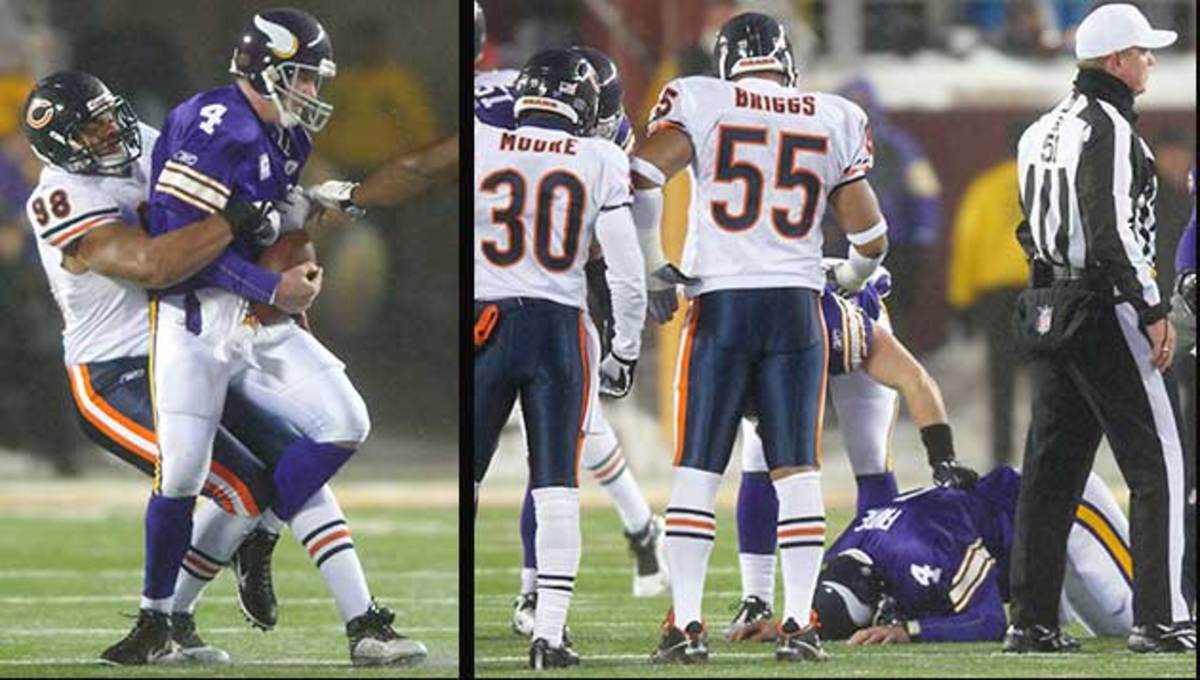
Finally, there’s Brett Favre. The only NFL player to win three straight MVP honors (1995-97) Favre lasted 20 seasons, most of them in Green Bay. But his final season, in 2010 with the Vikings, ended badly. Favre, the ironman of all quarterbacks who played every game in 17 straight seasons, missed three games with injuries. For the first time since 1993 he threw more interceptions than touchdowns. His final appearance was Dec. 20 in a 40-14 defeat to the Chicago Bears at the University of Minnesota’s stadium on a 23-degree Monday night. Favre completed five of seven passes for 63 yards, one TD and one interception but left the game with a concussion after a sack by the Bears’ Corey Wootton. At 41, the career of the most prolific passer in NFL history at that time was over.
There’s the sad arithmetic. Twenty Hall of Fame quarterbacks and only John Elway and Peyton Manning walked off the field as winners. Perhaps they will share a special corner in Canton
(Click on chart for magnified viewing.)


